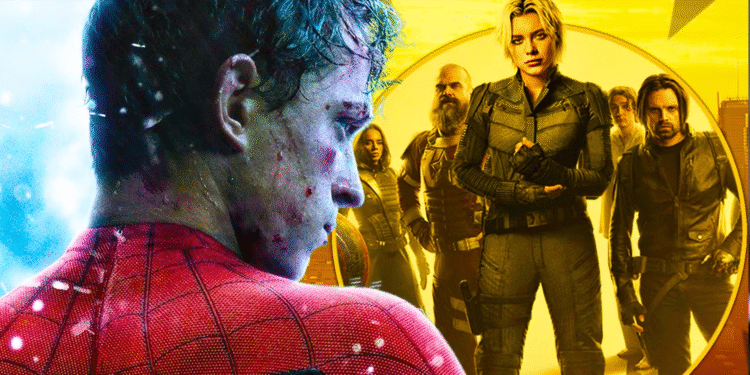How Spider-Man: No Way Home Changed Sentry’s Story in Thunderbolts—and What It Means for the MCU!
The Marvel Cinematic Universe (MCU) is no stranger to rewrites, retcons, and changes in direction, especially when integrating new characters into a crowded, interconnected world. One such change, however, comes with an unexpected twist—Spider-Man: No Way Home influenced the storyline of one of Marvel’s most powerful characters: Sentry.

In Thunderbolts, Sentry, played by Lewis Pullman, makes his debut as one of the team’s most formidable members. But the character’s storyline underwent some significant tweaks, thanks to a decision made by Thunderbolts director Jake Schreier. Why? Because of Spider-Man: No Way Home. So, what exactly happened, and how did Tom Holland’s web-slinger impact Sentry’s journey?
The Power of Memory Erasure in the MCU
For comic fans, Sentry’s origin story is well-known. Created by Jae Lee and Paul Jenkins, Sentry—Robert “Bob” Reynolds—is a powerful and tortured soul who grapples with his dark side, The Void. In the comics, to stop The Void’s destructive rampage, Bob erases himself from everyone’s memory—essentially making him a nonentity in the eyes of the world.
However, when the Thunderbolts movie came into play, director Jake Schreier realized they couldn’t lean on this storyline. Why? Because Tom Holland’s Peter Parker already did something very similar in Spider-Man: No Way Home. At the end of that film, Peter makes the ultimate sacrifice: he erases himself from everyone’s memories, including his loved ones, to prevent multiversal chaos. So, in a strange twist of fate, the memory-erasure plot device was already taken—and it was taken by Spider-Man.
A Unique Adjustment to Sentry’s Storyline
Schreier explained that they had to approach Sentry’s arc differently, as they couldn’t reuse the same memory-erasure concept. While the Thunderbolts team could have kept the original plot from the comics, doing so would have felt repetitive in the MCU’s broader narrative. As a result, Schreier and his team developed a new method of dealing with Sentry’s dark alter ego—The Void—without using memory loss as a solution.
This resulted in a notable shift in how the film handles Sentry’s introduction and resolution. Instead of erasing his memory, the story explores alternative ways of confronting The Void’s influence. This approach ensures that Sentry’s character arc remains fresh, distinct, and firmly integrated within the existing MCU framework.
The Psychological Depth of Sentry
While the change in Sentry’s story might seem minor, it points to a deeper focus on psychological storytelling. Schreier praised the original comics for their complex take on mental health, duality, and redemption. The Sentry comics present Bob as a hero constantly at war with his darker instincts—a theme Schreier felt was crucial to retain.
According to the director, Paul Jenkins described Sentry’s arc as a “parable for mental health,” reflecting the inner struggles that come with immense power and responsibility. By grounding the character in emotional and mental realism, the filmmakers aim to give Sentry a lasting and meaningful presence in the MCU.
Sentry’s MCU Debut: What’s Next?
Fans can expect a complex, layered character when Sentry debuts in Thunderbolts. Although the memory-erasure element from the comics has been reimagined, Sentry’s story still centers on power, accountability, and internal conflict.
Details about how Sentry will interact with the rest of the Thunderbolts team remain under wraps. But with his addition, the MCU is poised to explore themes of morality and psychological depth in new and exciting ways. Whether Sentry becomes a true hero or succumbs to his inner darkness, his story will surely leave a mark on Marvel’s cinematic future.
Thanks to the ripple effects of Spider-Man: No Way Home, Sentry’s journey has taken a fresh turn—one that blends iconic comic elements with bold, cinematic reinvention. And for MCU fans, this is only the beginning.










